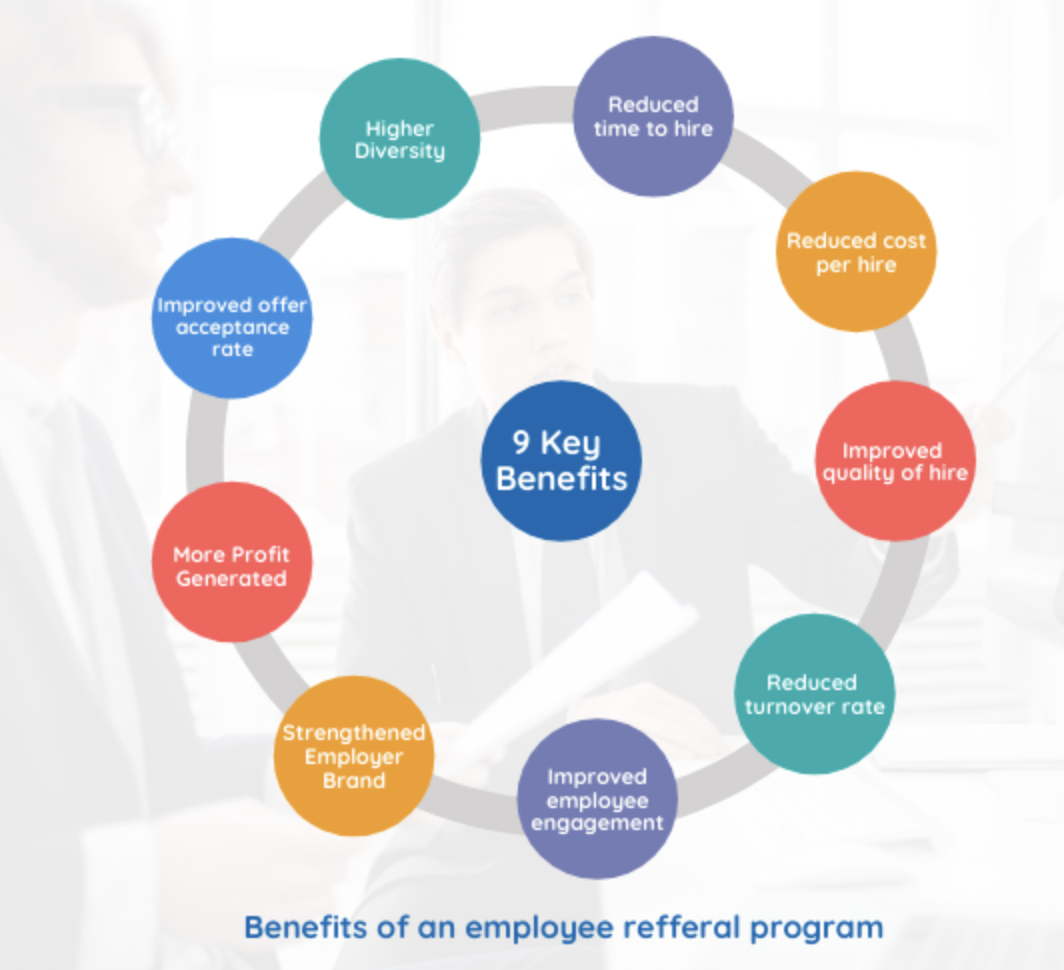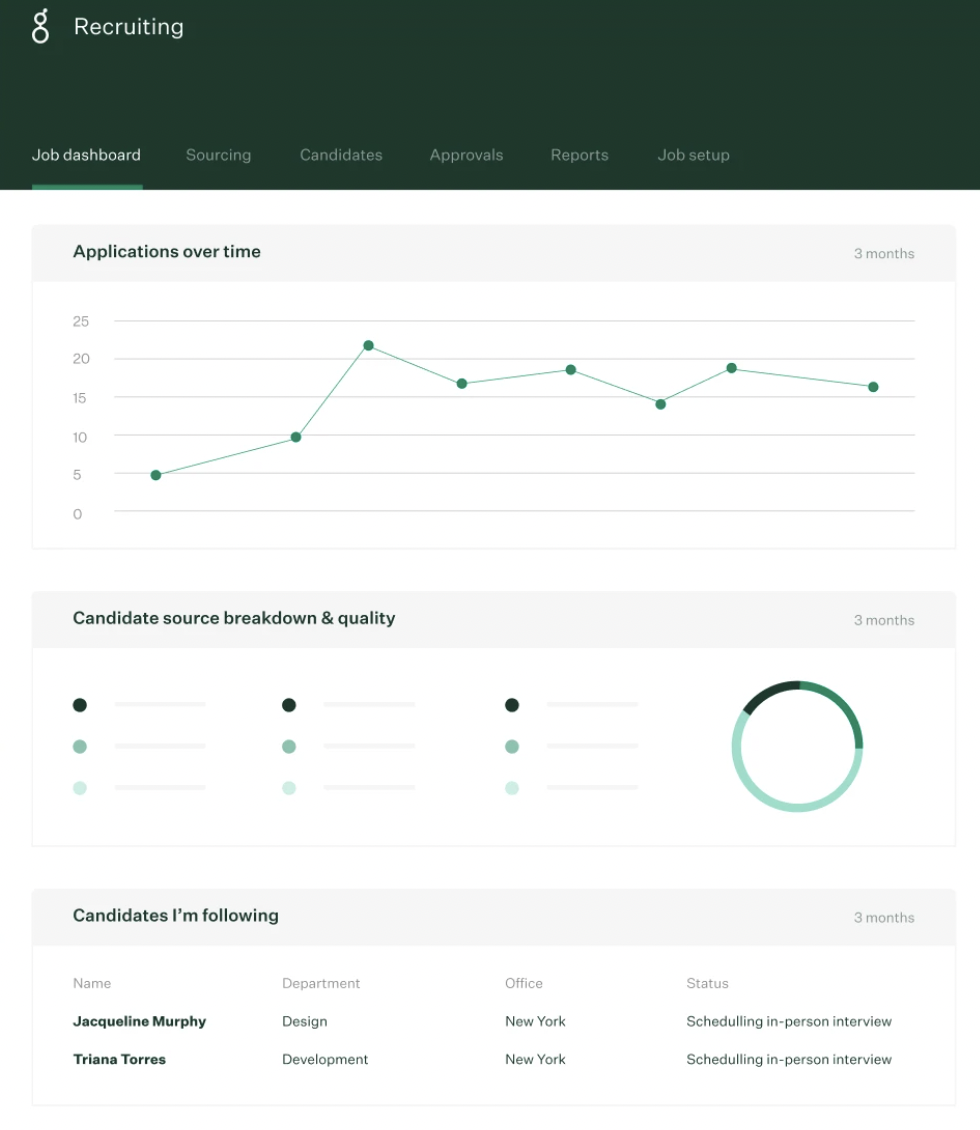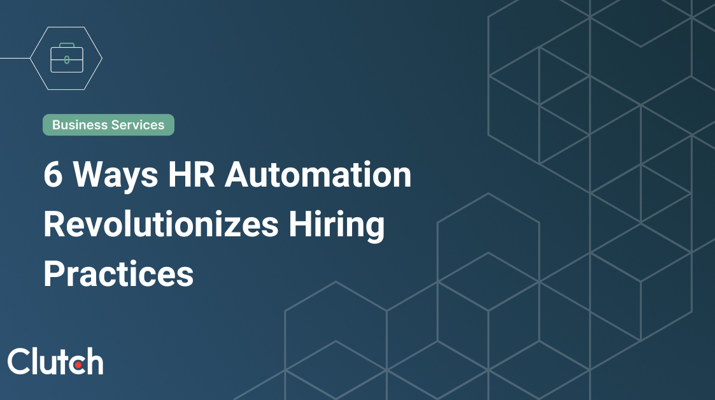

Updated April 10, 2025
Recruiting best practices guide hiring teams toward gold-standard industry trends and solutions. It can be overwhelming to attempt to keep track of them all, so we've narrowed it down to 10 practices for modern recruiters.
The global pandemic changed many aspects of the recruiting process. For one, it ushered in remote work across many industries, increasing possible talent pools for positions.
While remote work has helped some recruiters source top talent, the pandemic has also developed several stressors to HR professionals and hiring managers.
Looking for a Human Resources agency?
Compare our list of top Human Resources companies near you
For instance, we’ve seen record employee turnover rates in recent years. Sure, Millennials tend to jump jobs more often than older generations, but this time many were doing so because of stress, exhaustion, and burnout.
Turnover puts pressure on recruiters to backfill positions efficiently — especially given that backfilling a role generally costs between 50%–200% of the role’s annual salary.
Eyes are on recruiters to source quality candidates that are enthusiastic about positions, evaluate them fairly, and represent the company transparently to connect with best-fit applicants.
Now, this is a tall order given shifting trends and priorities for both employers and job candidates. We’ve compiled a list of ten crucial recruiting best practices to help refocus recruiting efforts for key roles.
Looking for help recruiting? Connect with a staffing company on Clutch to find top candidates fast.
Modern recruiters are tasked with being excellent communicators, coordinators, and masters of digital tools. It’s a lot to handle.
We’ve called out these ten game-changing recruitment practices to prioritize:
As a recruiter, it can feel like the company’s success relies on you. By focusing on these ten recruitment best practices, you can narrow your scope of focus and achieve excellence where it matters most.
Social media platforms are often exclusively the focus of marketing teams rather than HR professionals. Despite norms, recruiters must use social media to promote roles and the company’s employer brand.
The overall goal for recruitment professionals is to match roles with the right candidates. Recruiters can widen their reach through the use of social media.
If you’re not already integrated into your company’s social media calendar, consider seeking space in the following capacities:
These popular social media platforms will help you catch the attention of active and passive candidates while providing people with a window into your company culture.
Employee referral programs enables recruiting teams to tap into current employees’ networks to fill open positions.
A referral is a recommendation from a current employee that encourages the consideration of an individual external to the company to fill a given position.
Employee referral initiatives may sound a little far-fetched on their own. However, many companies incentivize current employees to refer qualified candidates to the company.

Source: Patterns Hiring
The most popular (and motivating) incentive is to provide monetary compensation to those who refer a successful candidate that both:
It’s easy to initiate referral programs into most automation and applicant tracking systems as well. This takes the weight off your shoulders that would otherwise require you to keep track of referral bonuses.
Targeting passive talent can help you fill roles with better talent at a faster pace. It’s easiest to engage with people who are actively applying to positions, but these individuals may not be the best candidates for the role you’re hoping to fill.
According to LinkedIn, 70% of job candidates are passive talent — meaning they aren’t actively searching for a new role. That’s the vast majority of job seekers.
When you announce job openings, you should be considering passive candidates just as much as the active job seekers that will apply to the job post on your site.
Taking the time to extend yourself to passive candidates will be worth your while. They may be more difficult to engage, but they account for a massive majority of the market and offer skillsets that other candidates might not have.
A strong employer brand will serve as the first impression of your company culture to potential candidates.
Further, your demonstration of culture through employer branding activities can dictate the candidate experience as they move through the hiring process.
Employer branding is your company's identity from an internal perspective, which attracts new employees to join.
Employer branding assets include:
SHRM says it best: “Employer brand affects recruitment of new employees, retention and engagement of current employees, and the overall perception of the organization in the market.”
One in three people has turned down a job offer due to negative employer reviews, which indicates how much employer reputation plays a role with new hires and in the onboarding process. Candidates are searching for information about your company.
Even if you’re not actively hiring, investing in your brand as an employer will make you more appealing to potential and current employees. Employers with good employer brands also showcase lower employee turnover rates.
One major pain point of job candidates is a long and arduous recruitment process. It’s part of a recruiter’s job to ensure that employers and potential new employees are on the same page regarding the application and interview process.
One easy way to address this is to lay out the pathway to an offer at the end of screening calls. Does the recruitment process have a skills assessment? Will there be a panel interview that the candidate should be prepared for?
The application process is difficult as it is — any insight into the hiring manager decision-making process will be appreciated by applicants.
Additionally, 44% of applicants are looking for information about pay and benefits during the hiring process. As an HR teammate, you’re best positioned to provide this detail. Don’t be shy about all that your company has to offer — let candidates know that your business seeks to support its employees.
You can make this information available either through employer branding content hubs or through compelling careers pages and employee testimonials. Just make sure this important information is accessible to candidates.
All job descriptions should embody two main characteristics: accurate to the position and accessible to candidates. It’s the HR department’s job that job postings successfully encompass both requirements.
In terms of accuracy, candidates must understand what they’re applying for. By doing competitive research and developing industry knowledge for target positions, you should be able to craft job descriptions and titles that align with the market and the position you’re hoping to fill.
Accessibility for job postings can be a whole different animal. Your options for widening your reach are to post to different job boards or to create job ads.
Job board: a website or platform dedicated to connecting candidates with active role vacancies. Platforms include Indeed, Glassdoor, Otta, and Wellfound.

Source: Otta
A job ad is a description posted to a platform outside of the company website that characterizes the nature of the role and entices candidates to apply. Job ads live on job boards and company websites.
Automation is about to make your life so much easier. Applicant Tracking Systems (ATS) are a must for modern recruiters.
An ATS is a digital system that automates certain elements of the recruitment process. Its intention is to streamline staffing and human resources activities for the sake of competitive efficiencies.
Of course, introducing an ATS means getting comfortable with recruiting software. Here are some of our best-in-class recommendations:

Source: Greenhouse
Applicant Tracking Systems are essential to businesses because they allow companies to examine where individual candidates are in the recruitment process quickly.
What can an ATS do for you?
There are tons of ways an applicant tracking systems aids your recruitment team’s ability to bring in new talent on accelerated timelines.
One of the many challenges that recruiters must face is upkeeping a steady stream of candidates for positions that might not even currently be open.
This means that recruiters are going to need to research and understand the talent pools in which they are (or will be) hiring for.
In the past, recruitment professionals may have rejected qualified candidates and done away with their application then and there — even if their skill sets met the needs of the organization.
Keeping up with a talent pool encourages staffing pros to keep talented job candidates in the conversation, even if they’re not chosen for the initial position they applied and interviewed for.
Think about it: the job market is tough, and you may have interviewed two or three excellent candidates for an open position. Only one person can end up with the job, but why discard the other two impressive applicants?
Understanding your talent pool includes intriguing new candidates just as much as it means engaging promising past applicants. Think about how you can best leverage your employer brand to sustain interest with those you’ve already vetted.
Looking for a way to rapidly scale recruitment processes up and down without overspending on internal recruiters?
Recruitment agencies are one resource you can use to access expert recruiters who are specialized in your industry without having to commit to the permanence of adding new internal teammates.
Additional reading, 'When to Hire an In-House HR Specialist vs. HR Firm.'
In a nutshell, here’s what leveraging a professional staffing and recruitment agency will look like:
Note: Recruiting agencies will all work differently. If you want additional services from your provider, make sure to discuss your needs in the interview and RFP stage. The more communication you do in this stage, the more successful your collaboration will be.
It’s also important to note that the expertise level that recruiting companies possess might make them the best choice for companies. Because these companies dedicate themselves to recruiting activities 100% of the time, they will understand recruiting trends better than internal teammates with cross-functional responsibilities outside of recruiting.
Learn more about how much it cost to hire a recruitment agency in Clutch's 'HR & Recruiting Pricing Guide.'
Recruiting metrics are absolutely essential for the recruiting and staffing process because they allow companies to evaluate the performance of the team.
Whether you’re hiring a recruiting company or dealing with staffing in-house, you will need KPIs and metrics to determine how successful your team is in its efforts.
Of course, every team has different needs and priorities. However, a few recruitment metrics account for the majority of staffing priorities. Here are our top picks for staffing metrics to track:
These metrics are important — both when determining the success of internal teams and external agencies. Regardless of how companies choose to hire for new roles, KPIs should be set to determine where improvements can be made.
By introducing metrics to your current recruiting processes, you’re enabling data-driven decisions to be made regarding the performance of your hiring teams.
As a recruiter, your goal is to target top talent and encourage candidates to see the value in joining your team. This takes a lot more effort than assumed — staffing professionals must source, target, and understand the talent pool.
Once an understanding is reached, they must appeal to candidates (both active and passive) in a compelling and digital-first manner.
Staffing agencies can help make the hiring process easier. Shortlist best-in-class recruitment agencies on Clutch to help you make the right hire...faster.
Additional Reading:


